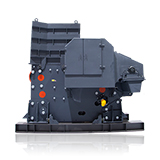How Shaking Table Works in Mining?
The shaking table, also known as a gravity concentration table, remains one of the most versatile and widely used gravity separation devices in mineral processing. They have been widely employed for the concentration of fine and coarse particles of heavy minerals, such as gold, tin, tungsten, tantalum, and chromite. Despite being one of the oldest mineral processing technologies, its effectiveness in separating materials based on density differences ensures its continued relevance in modern operations.

Working Principle of Shaking Tables
The shaking table operates on the principle of gravity separation, exploiting differences in specific gravity between valuable minerals and gangue particles. The separation is achieved through a combination of stratification, differential motion, and the flow of water over an inclined, riffled surface.
1. Gravity and Density Differences
The core principle is that particles with different densities will respond differently to gravitational and centrifugal forces. Heavier particles tend to settle and move in a different trajectory compared to lighter particles when subjected to shaking and flowing water.
2. Stratification
When a slurry of particles is fed onto the shaking table, the motion causes the particles to stratify according to their density and size. The heavier and coarser particles settle closer to the table surface, while lighter and finer particles remain suspended in the fluid.
3. Differential Motion
The table deck is mounted on a mechanism that imparts a reciprocating shaking motion, usually in the longitudinal direction. This shaking motion combined with the slope of the table causes the particles to move across the table surface.
- Longitudinal Shaking: Moves particles along the length of the table.
- Lateral Motion: Some tables also impart a slight lateral motion to aid in separation.
4. Water Flow
A controlled water flow runs over the table surface, assisting in the stratification and washing of lighter particles down the table, while heavier particles move toward the concentrate end.
5. Riffles and Deck Surface
The table surface is covered with riffles (raised bars) which trap heavier particles and create zones of differential flow velocity. The riffles help retard the movement of heavy minerals, allowing lighter particles to be washed away.
Advantages of Shaking Tables
- High Separation Efficiency: Capable of producing high-grade concentrates with good recovery.
- Simple Operation: Easy to operate with minimal training.
- Low Capital and Operating Costs: Compared to complex flotation or magnetic separation equipment.
- Versatility: Suitable for a wide range of minerals and particle sizes.
- Environmental Friendliness: Uses water and gravity without chemicals.
Limitations and Challenges
- Limited Capacity: Shaking tables are generally suitable for small to medium-scale operations.
- Sensitivity to Feed Variations: Changes in feed rate, particle size, or slurry density can affect performance.
- Fine Particle Recovery: Efficiency decreases for ultra-fine particles below 0.05 mm.
- Manual Adjustment: Requires skilled operators to optimize parameters.
Comparative Analysis with Alternative Technologies
Shaking tables compete with several other gravity separation devices:
- Spiral Concentrators: Higher capacity but lower grade products
- Centrifugal Concentrators: Better fine particle recovery but higher operating costs
- Jigs: Higher capacity but less precise separation
- Mozley Tables: Specialized for very fine particle separation
The choice between technologies depends on specific application requirements including:
- Feed characteristics and tonnage
- Product quality requirements
- Capital and operating cost considerations
- Space availability and layout constraints
Recent Advances and Innovations
- Automated Control Systems: Integration of sensors and automation for real-time monitoring and control of operating parameters.
- Improved Deck Materials: Use of wear-resistant composites and rubber surfaces to enhance durability and reduce maintenance.
- Enhanced Riffle Designs: Development of variable riffle geometries for improved fine particle recovery.
- Modular and Portable Designs: Facilitating use in remote or small-scale mining operations.
Despite being one of the oldest mineral processing technologies, shaking tables maintain their importance in modern mineral processing circuits. Their ability to make sharp separations based on small density differences, combined with operational flexibility and relatively low operating costs, ensures their continued application across various sectors of the mining industry. While newer technologies have emerged for specific applications, the shaking table remains unmatched for many separation tasks requiring high-precision concentration.







